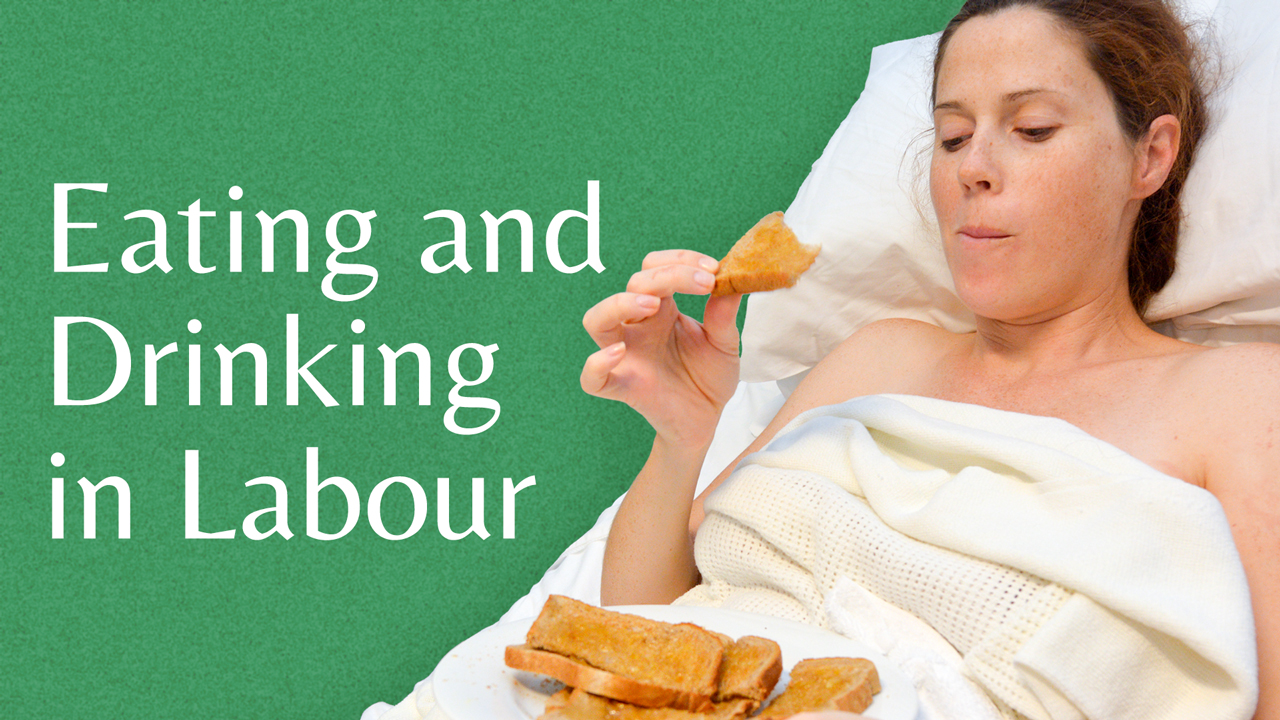Eating and drinking in labour is a controversial subject, with policies varying widely amongst practitioners.
Historically, eating has been discouraged during labour, but today, there is an increasing trend of allowing patients to eat and drink as they wish.
The Risk of Anaesthetic-Related Complications
Back in the mid-1900s, when anaesthetics were far less safe, the ‘nothing by mouth’ policy aimed to prevent the risk of aspiration with general anaesthesia (Dekker 2022).
Since then, however, the safety of anaesthetics has greatly improved, meaning hospital policies may need to be rewritten to reflect this (Dekker 2022).
There is still a lack of conclusive research about the relationship between fasting times and the risk of pulmonary aspiration (Dekker 2022). As Maharaj (2009) notes, whether or not allowing food and fluid throughout labour is beneficial or harmful can only be determined by further research.
Should patients of low-risk status be denied oral fluids and food intake during labour?
In trying to answer this question, Hunt (2013) conducted a literature review exploring whether withholding food and drink during labour decreased the risk of maternal morbidity from Mendelson's syndrome. Unhelpfully, the result was inconclusive and only served to question the validity of this practice even further.

What are the Energy Needs of Patients in Labour?
Very little research exists into the nutritional needs of patients in labour, but research into sports nutrition suggests that taking in carbohydrates during exercise improves performance and protects against fatigue and ketosis.
Could this also apply to labouring women? Dekker (2022) argues it does, and based on a recent Cochrane review, suggests that patients labouring under less restrictive eating and drinking policies had shorter labours by about 16 minutes.
Interestingly, only one of the trials listed in the Cochrane review considered maternal satisfaction alongside physiological responses, even though it was found that participants in the group allowed to eat reported greater satisfaction compared to those who were only given sips of water.
Disadvantages of Fasting in Labour
Poor nutritional balance can be associated with longer and more painful labours, and fasting does not seem to guarantee an empty stomach or less acidity should anaesthesia be needed.
For example, Singata et al. (2013) compared the effect of restricting fluids and food in labour to patients who were allowed to eat and drink and found that there were no benefits or harms to patients at low-risk of needing a general anaesthetic. They concluded that this group of patients should be free to eat and drink in labour, or not, as they wish.
Nil by Mouth Policies
The main reason why some hospitals have a ‘nothing by mouth’ policy is to ensure labouring patients have an empty stomach should they need emergency surgery.
However, Dekker (2022) notes that stomach emptying slows down once labour commences, meaning that fasting for 8, 12 or even 24 hours after contractions doesn’t guarantee an empty stomach at the time of birth.
Fasting may even be harmful, as it may cause gastric juices to become dangerously acidic if aspiration were to occur (Dekker 2022).
To summarise, ‘nil by mouth’ policies have never been adequately researched, and clear fluid policies are based on research performed with non-obstetric patients.

Practice Points
Australian guidelines state that patients should be enocuraged to ‘eat and drink as desired’ during labour, as restricting intake has ‘no improvement on maternal or fetal birth outcomes’ in low-risk individuals (Queensland Health 2022; SA Health 2022; SCV 2021).
This stance is supported by guidelines from other worldwide organisations, including the World Health Organisation (WHO), American College of Nurse-Midwives (ACNM), National Institute for Health and Care Excellence (NICE) and Society of Obstetricians and Gynecologists of Canada (SOGC) (Dekker 2022).
For high-risk patients, the situation is different, as there is no evidence from randomised trials that could be applied to their situation. Despite this, food and drink should not be withheld from a patient against their will, even if they have been deemed ‘high-risk’ (Dekker 2022).
It’s important to note, too, that a high BMI does not necessarily mean a patient is high risk. In fact, available evidence indicates that the belief a high BMI automatically increases the risk of aspiraton is rooted in fatphobia (Dekker 2022).
Interestingly, it appears that most patients seem to naturally limit their intake as labour gets stronger (Dekker 2022).
Conclusion
Given the lack of high-quality research, the issue of whether patients should eat and drink in labour remains controversial. However, for low-risk patients, current research suggests that there is little risk of harm in eating and drinking as labour progresses, and patients should be free to do as they desire.
As Hunt (2013) suggests, perhaps it is now up to midwives to review their local policies and drive new research forward in this area.
Topics
References
- Dekker, R 2022, ‘Evidence on: Eating and Drinking During Labor’, Evidence Based Birth, 3 May, viewed 19 June 2023, https://evidencebasedbirth.com/evidence-eating-drinking-labor/
- Hunt, L 2013, 'Literature Review: Eating and Drinking in Labour', British Journal of Midwifery, vol. 21 no. 7, viewed 19 June 2023, https://www.magonlinelibrary.com/doi/abs/10.12968/bjom.2013.21.7.499
- Maharaj, D 2009, 'Eating and Drinking in Labor: Should it be Allowed?', European Journal of Obstetrics & Gynecology and Reproductive Biology, vol. 146, no. 1, viewed 19 June 2023, https://europepmc.org/article/MED/19428169
- Queensland Health 2022, Normal Birth, Queensland Government, viewed 19 June 2023, https://www.health.qld.gov.au/__data/assets/pdf_file/0014/142007/g-normalbirth.pdf
- SA Health 2022, South Australian Perinatal Practice Guideline: Labour and Birth Care, Government of South Australia, viewed 19 June 2023, https://www.sahealth.sa.gov.au/wps/wcm/connect/b754c4d4-273b-47d9-86ed-e6d28eb6656f/Labour+and+Birth.+Routine+care+in+normal+labour+_birth_PPG_V1_1.pdf?MOD=AJPERES&CACHEID=ROOTWORKSPACE-b754c4d4-273b-47d9-86ed-e6d28eb6656f-ocQNBqF
- Safer Care Victoria 2021, Care During Labour and Birth, Victoria State Government, viewed 19 June 2023, https://www.safercare.vic.gov.au/clinical-guidance/maternity/care-during-labour-and-birth
- Singata, M, Tranmer, J & Gyte, G 2013, 'Restricting Oral Fluid and Food Intake During Labour', Cochrane Database of Systematic Reviews, no. 8, viewed 19 June 2023, https://www.cochranelibrary.com/cdsr/doi/10.1002/14651858.CD003930.pub3/abstract
 New
New 
